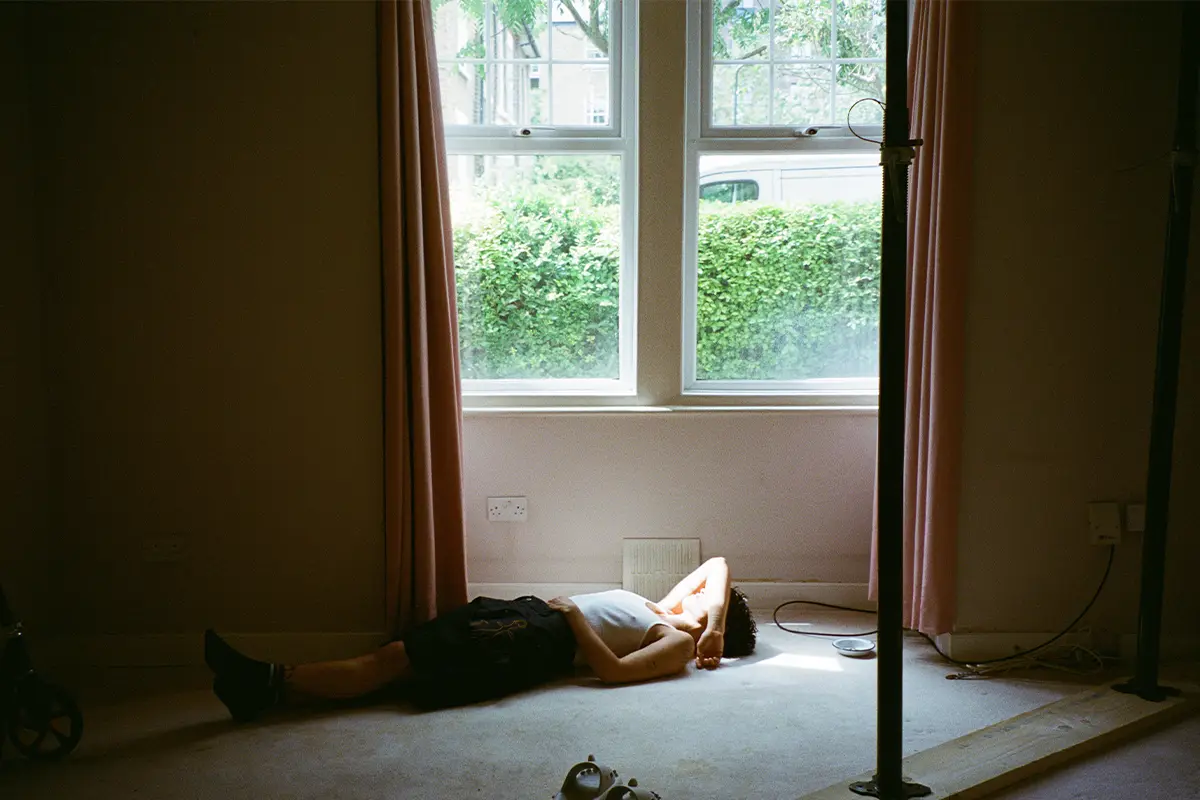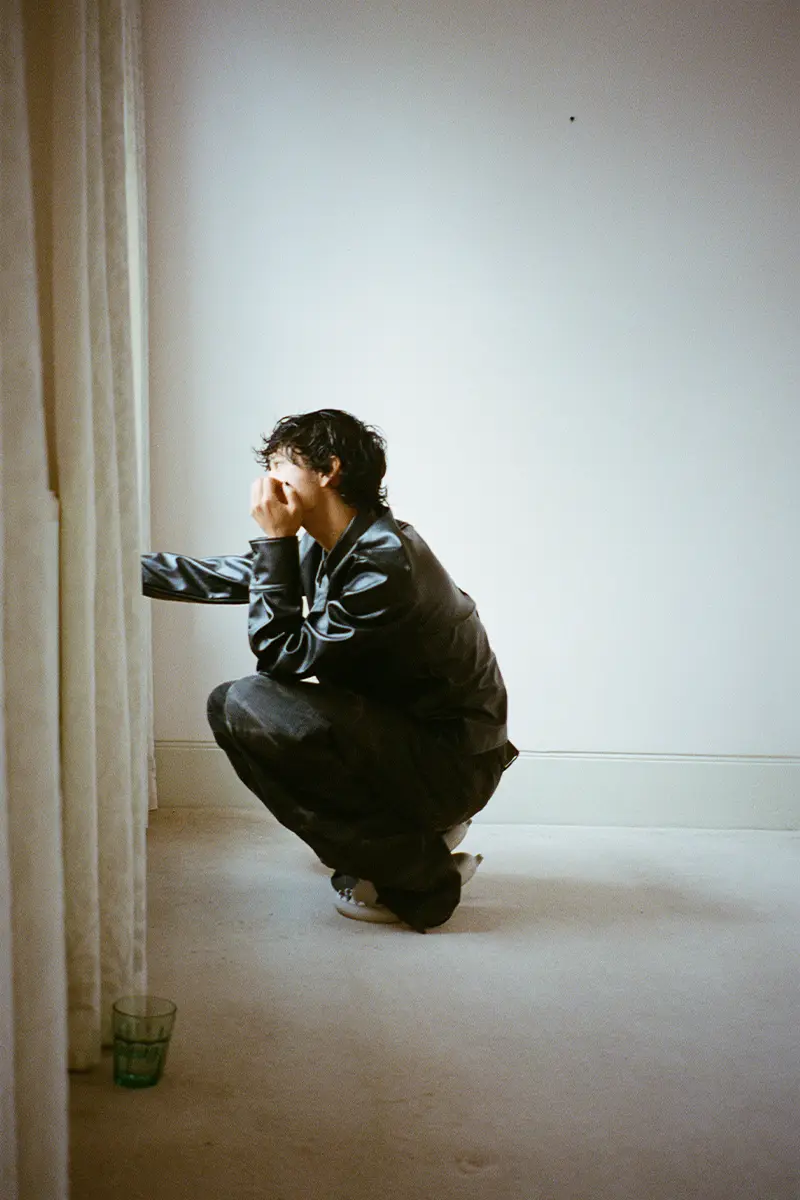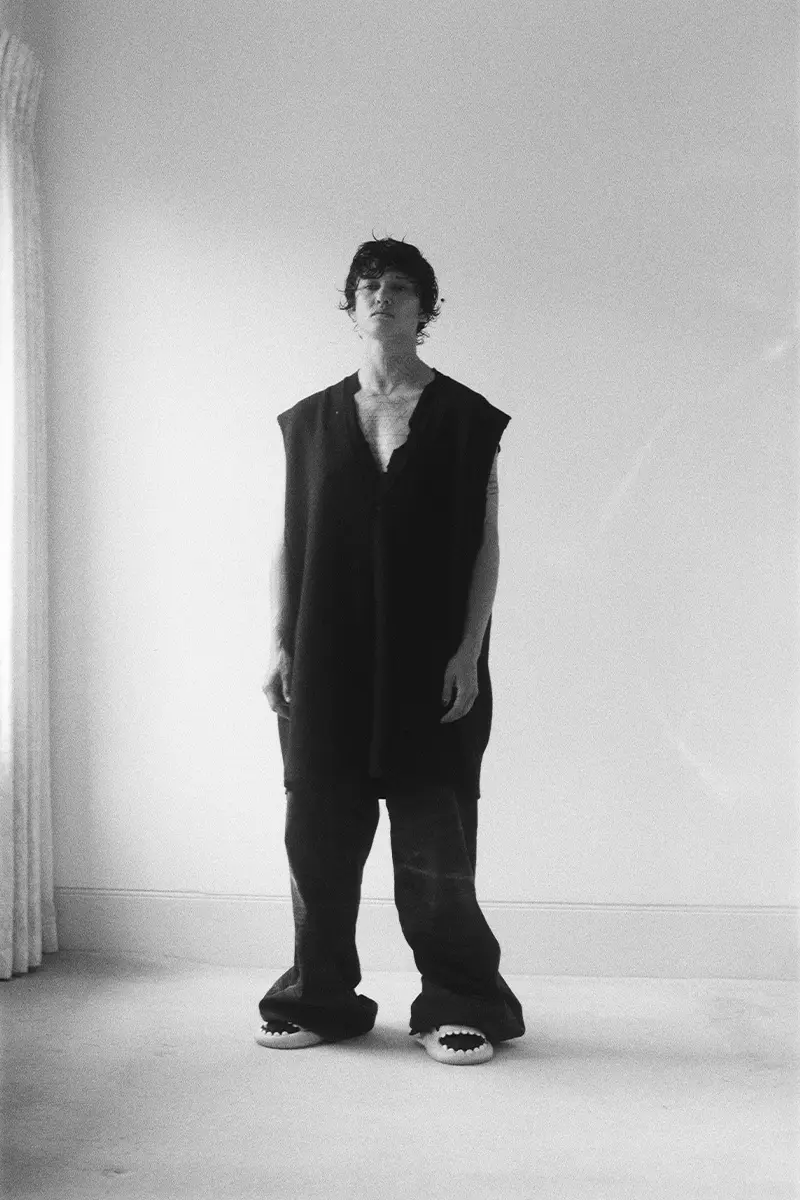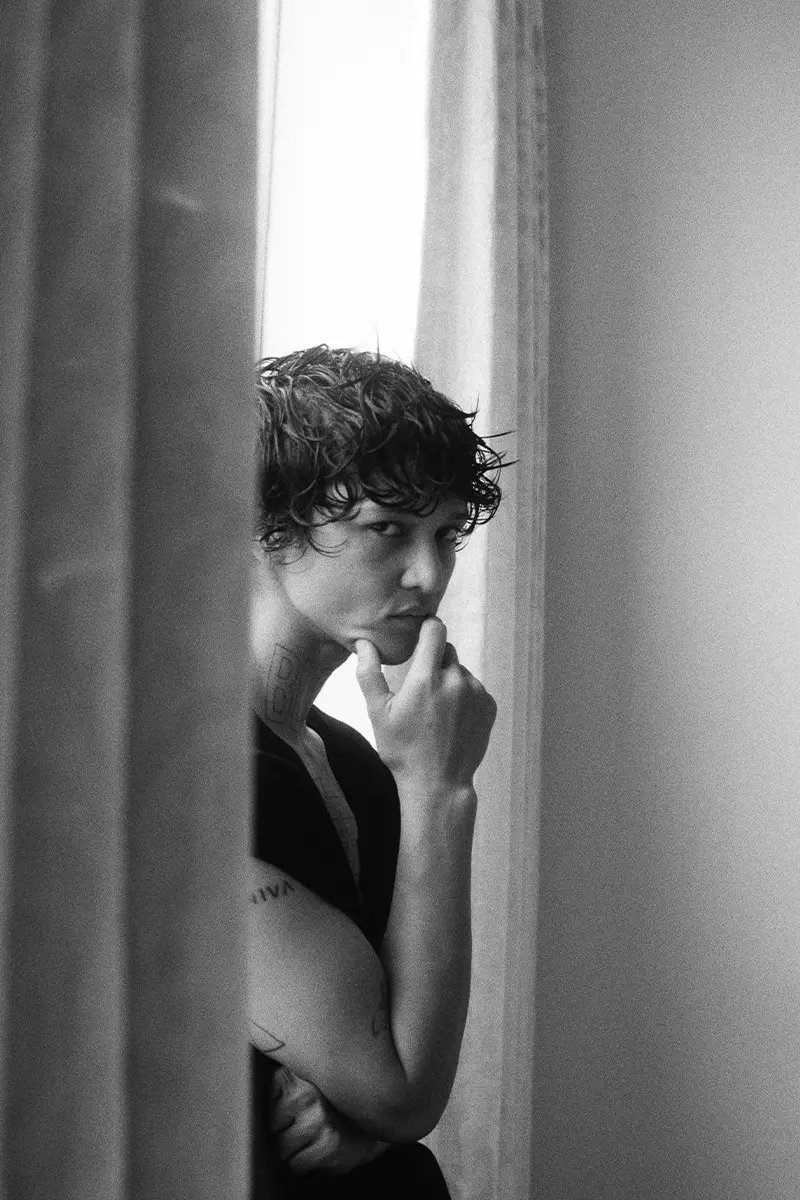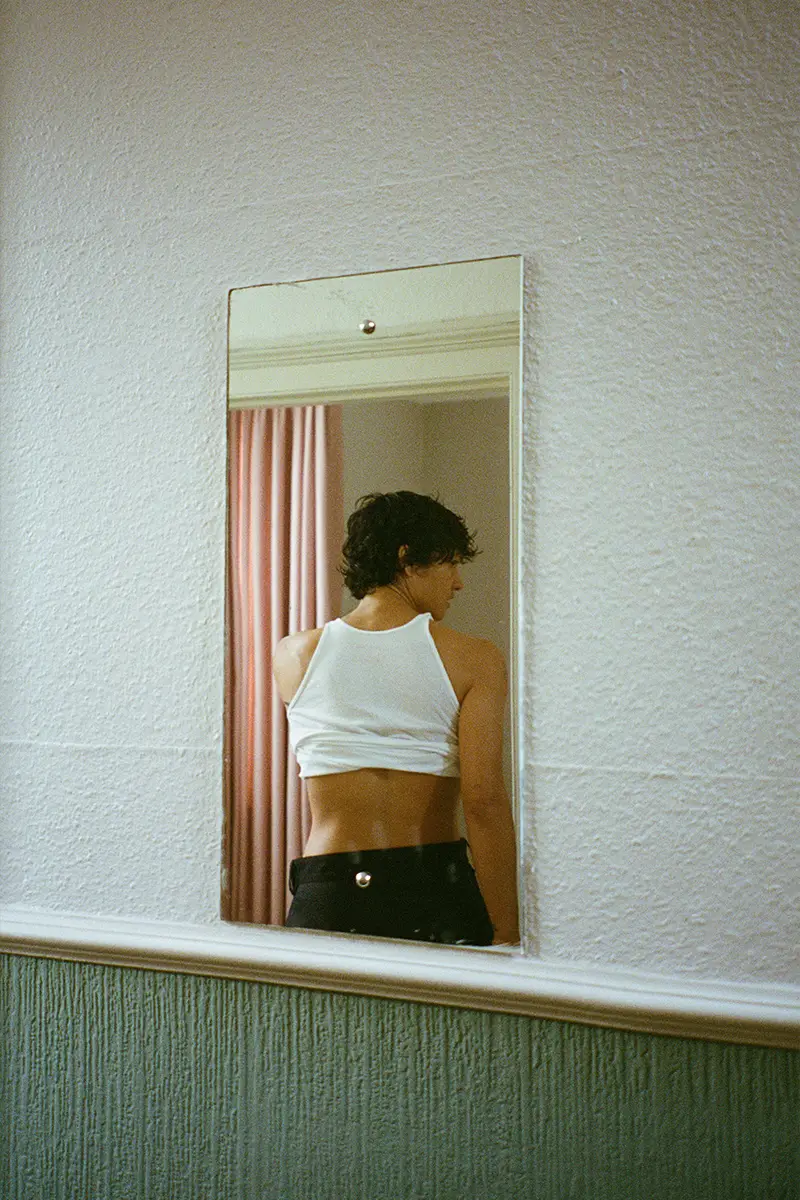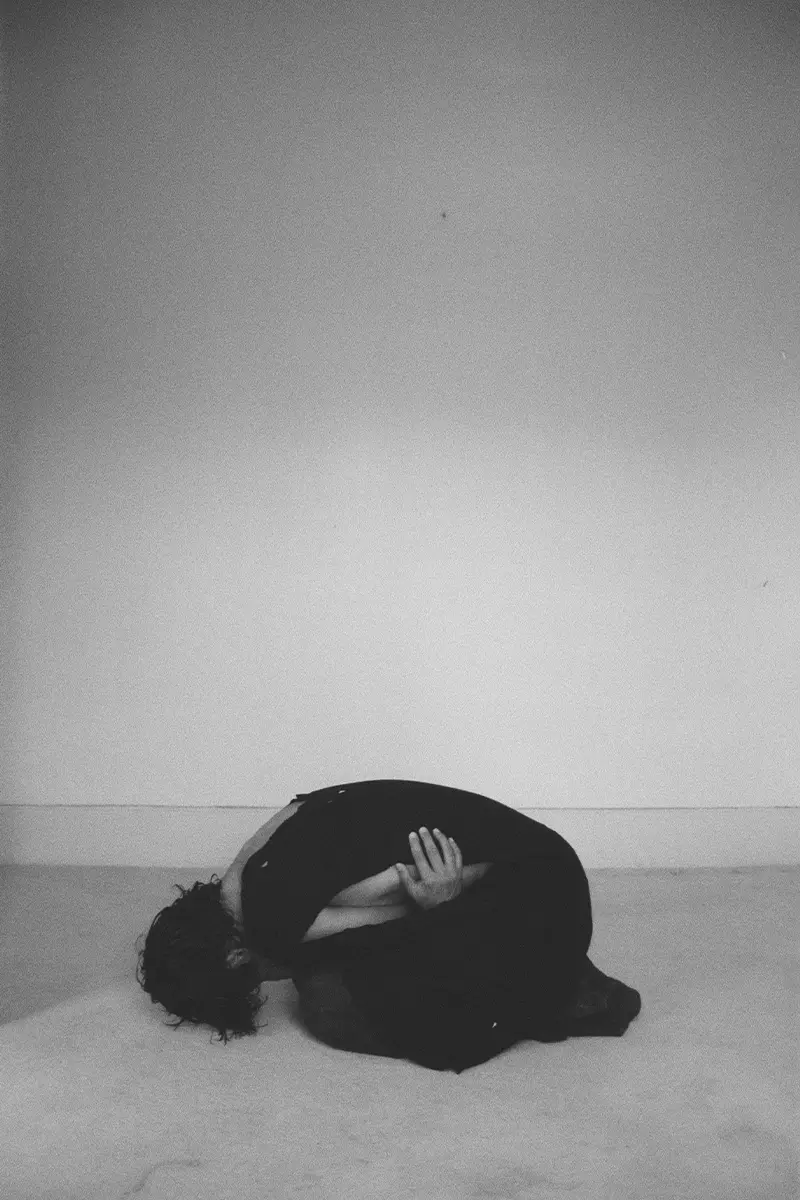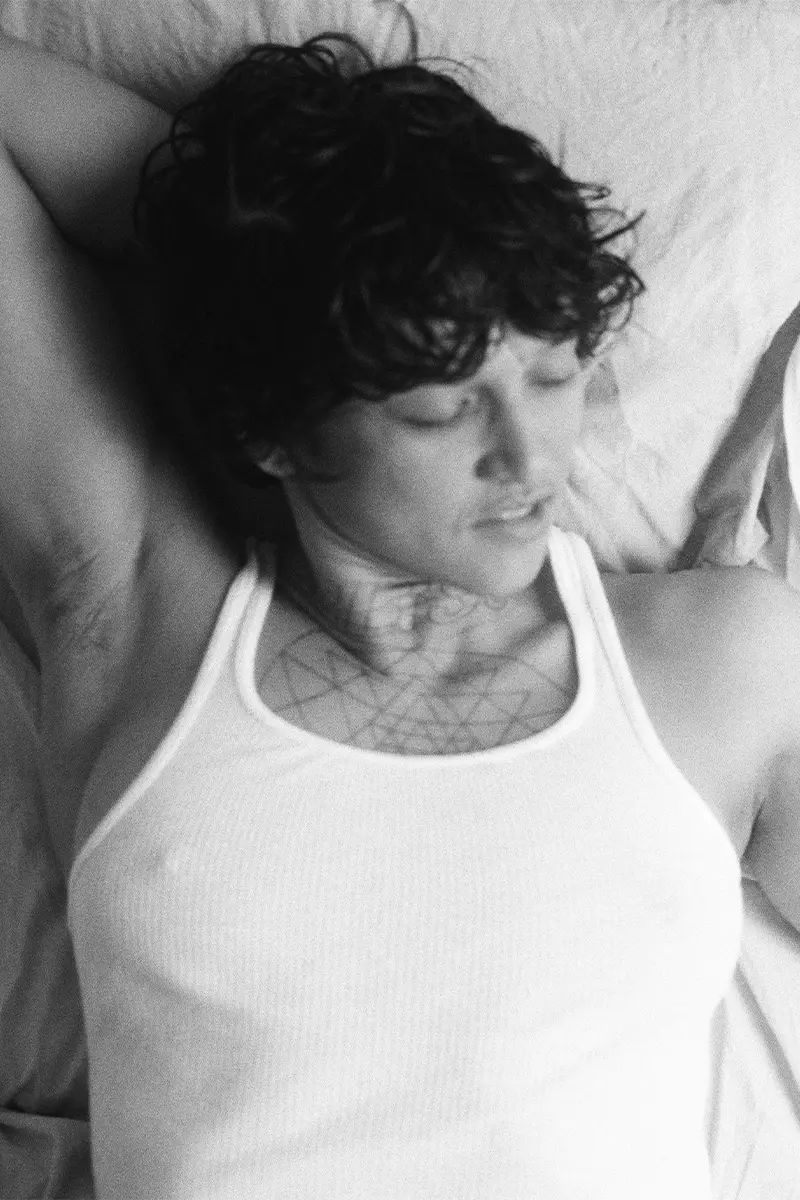Tosh Basco: «Nudity challenges divisions and allows us to see ourselves as vulnerable and authentic beings. Performance art can serve as a reminder of our common humanity»
Pain, relief, confusion, respite, sexual exploration, metamorphosis – Tosh Basco performances
Performance and drawings go hand in hand for Tosh Basco. Whenever she performs, the visual artist moves with grace and calculation as she conveys pain, relief, confusion, respite, sexual exploration, metamorphosis, and anger at once in a brief period. She widens her eyes, purses her lips, tilts her head, inhales and exhales, bends forward, scoops the air with her arms, and squints.
As she steps into her character ‘boychild,’ a moniker she identifies with as a performance artist, she lends a part of herself to her portrayal and becomes partly unconscious of what takes place. This is where drawing comes in; it is an after-medium that lets her process what happened in her performance, an epiphany to visually show how she feels while performing.
Tosh Basco: abstract images on paper and artistic experimentation
Pigment and inks forming abstract images appear on paper as Tosh draws her movement. Sometimes, the negative space completes the artwork, allowing the smudges of ink to detail the body’s direction. Other times, smears of pigments, starting from the middle before spreading outwards, may denote the intensity of emotions she feels and feels. It is not intentional that the themes of lightness and darkness come up in her performances and artworks; they surface from the interpretation of the viewers.
For Tosh, every move she makes and every painting she creates stems from personal experiences. How to define those experiences with a word is an element in her artistry experimentation she is not attempting to pin down. Everything flows in and out. Not even the term ‘love’ can encompass what she is representing even if it is what she ultimately strives for in her work. This push and pull enables her to think and feel, then process what occurs in between.
Nudity in performance art and the influence of music to Tosh Basco’s music career
In a conversation with Lampoon, Tosh Basco unpacks how she developed the artistic name “boychild,” recalls her first performance on stage, narrates the way she started drawings and paintings from graphite to oil, offers a piece of her mind on the use of nudity in performance, and shares the influence of music to her career.
boychild, the artistic experimentation of Tosh Basco
MATTHEW BURGOS
Let’s talk about developing your artist name boychild during your art experimentations. Can you tell us how you ended up choosing it, considering it was inspired by the different personalities of a clown as a character? And how do the characteristics of a clown resonate with you?
TOSH BASCO
It was a performance of a friend that I was invited to join, not my own. At the time, I was a photographer, not a performer, but I was intuitively interested in the idea. My friend asked me to create a character for his performance, and I immediately thought of a few possibilities like an adjuster, a shaman, or a clown. I noticed that these roles share a common function within a community, as they can address certain issues, such as power or authority, through humor and jest, which others might not be able to.
As a young queer and trans person of color, I felt somewhat disconnected from society. I observed how queerness and queer characters were often portrayed in mainstream media, and I wanted to explore these concepts in an intuitive way, possibly even as a means of healing. Even now, as an artist, I aim to communicate in unconventional ways beyond what we are traditionally taught, drawing inspiration from poetry and music. The name “Boy Child” wasn’t a deliberate choice; it was a spur-of-the-moment decision when a drag queen organizing the event asked for my drag name. I jokingly used my Facebook name, which was a combination of two nicknames people used to call me with “Boy” being one of them. I never thought it would become permanent, but over time, it all came together and stuck.
Tosh Basco first performance at Club Something, San Francisco
MATTHEW BURGOS
Do you still remember your first performance?
TOSH BASCO
The first performance took place in San Francisco at a nightclub called Club Something, which I used to visit frequently. It was a terrifying experience, and fear was an overwhelming feeling. But being on stage and facing that intense fear also made me feel strangely close to a sense of power. There was an abundance of energy in that space, and though I couldn’t quite pinpoint it at the time, it was definitely palpable.
MATTHEW BURGOS
Did you realize that you could own this power that you felt?
Tasting the possibilities that could be created through artistic experimentation
TOSH BASCO
I wouldn’t say that I own this power; I didn’t know I had access to it. That’s why I continued to perform because I felt a unique energy and sense of power that I struggled to express in photography or even music. Drag and performance allowed me to explore gender beyond the binary, embracing outlandish possibilities through makeup and performativity. It was incredibly freeing and fun to play in this way, even if only for a moment. Through drag, I realized that the world I once believed to be fixed and linear was, in fact, open and malleable, especially when experienced through performance. On stage, I tasted the possibilities that could be created through artistic experimentation.
MATTHEW BURGOS
Can you describe your state of mind when you perform? Initially, you mentioned feeling fear during your first performance, but now that you have performed many times, do you enter a safe and comfortable space before, during, and after your performances?
How much of a role does music play in shaping Tosh Basco performances?
TOSH BASCO
When I perform, there’s something about it that goes beyond the mind. The word “mind” makes me think of logic and reason, but performing taps into a different, more energetic realm. It’s challenging to find the right words to describe it, but it’s not solely tied to the body’s energy either; it’s something beyond that. To truly connect with this state, I have to let go of overthinking and any mental barriers that might hinder me from expressing myself. It’s not an easy process. It requires vulnerability, openness, humility, and strength. But I believe that this state is accessible to anyone. It doesn’t matter who you are; everyone has their own way of tapping into this powerful and unhindered mode of expression.
Tosh Basco – My work is not limited to a specific medium like music
MATTHEW BURGOS
How much of a role does music play in shaping your performances? Do you have a particular genre that you want to incorporate into your performances?
TOSH BASCO
Music played a role in my learning of movement, especially in the beginning. It has been incredibly influential and a great teacher. In fact, I consider music to be the highest form of art. My work is not limited to a specific medium like music. I have numerous collaborators and friends who are musicians, and I’m more interested in the process of collaboration itself. It’s not about sticking to particular genres; instead, I focus on how and why we arrive at certain creative spaces.
Genre or any research topic can serve as a means to navigate or explore creative territories, but ultimately, it’s the people involved, the creators, musicians, or storytellers, that inspire my work. Collaboration has always been an aspect of my artistic journey. As you asked earlier, music has informed and influenced my movement from the beginning. Even when performing a drag number in a club, it felt like a collaborative experience, and I gained so much from it. “Collaboration” truly encapsulates this process, and it has been essential throughout my artistic endeavors.
In Tosh Basco’s life, performance has become a career, a lifelong practice where she creates her work and sexual experimentation
MATTHEW BURGOS
Let’s delve into a brief timeline of your artistic journey. You mentioned that you started as a photographer before venturing into performances, and you also do drawings and sketches. Can you walk us through how you transitioned between these different forms of art over time? What about your sex experimentation?
TOSH BASCO
I wouldn’t call it dabbling; I have embraced each form of art. Performance has become a career, a lifelong practice where I create my work. The drawings are a way for me to process and understand what happens during my performances. When I perform, I’m not aware of how it looks, so the drawings help me make sense of it. I started this exploration by wanting to capture traces of my movements on stage, but now I use different materials like paper, dance floor material, and now canvas to express and understand the dance in new ways. Each material carries its own history and connotations. For instance, graphite feels like writing and impermanence, while ink, particularly Chinese calligraphy ink, represents a more permanent form of communication.
Tosh Basco – transitioning from drawings to paintings
I started working on these drawings a few years after I began performing, and I still create them. However, in the past year, I have transitioned from drawings to painting. I now use oil paint on linen, and while it’s challenging, it allows me to explore different questions and thoughts. The materials themselves influence how I think and create. As a writer, you might understand how the form you use, whether it’s jotting on a notepad, typing on a computer, or writing in a journal, can impact your thought process. It’s a similar experience with artistic materials; they allow you to approach your ideas in distinct ways.
I had my first performance at the end of 2011, and about three or four years later, I started experimenting with placing paper on the stage so I could take traces of my movements with me. The drawings are not separate from the performances; they represent a maturation of my creative process, using different tools to explore the same themes. Now, as an artist, I’m at a point where I’m using painting as a tool to convey what I express in performances. I’m trying to make sense of something that goes beyond logic; it’s more of a felt sense. Sometimes, I question why I feel compelled to understand and convey this ineffable experience, but it’s a deep desire that challenges and rewards me in a meaningful way as an artist.
Different art forms inform and complement each other – Tosh Basco
MATTHEW BURGOS
I love how your different art forms inform and complement each other. It’s amazing how you’ve channeled your expression into various mediums. Transitioning from drawings to linen must have been a change in terms of materials. Has it been a challenging leap, or has it been somewhat easier, as you mentioned earlier?
TOSH BASCO
It’s been challenging, but in a good way. Painting on linen has been humbling; it demands respect for the medium. There’s a rich history of painting, which feels intuitive to me, connecting back to ancient cave paintings. It’s a natural progression from my drawings to the current moment of painting. I’m not sure how long I’ll continue with painting, but I’m currently fascinated and invigorated by the process, similar to how I felt when I first started performing. Painting has a sense of instantaneity and also requires time for layers to develop. It’s a process that demands time and patience, but I have the time to explore it.
Tosh Basco: lightness and darkness – art and performance
MATTHEW BURGOS
It seems that love and darkness are not explicit themes you’re actively trying to convey in your work, but viewers may sense undertones of these themes. I’m curious if you have updated or changed the themes you want to explore and highlight in your art.
TOSH BASCO
The word “love” alone doesn’t encompass everything it represents, although that’s ultimately what I’m striving to explore in my work. Love, as a concept in English, has its limitations. It can’t capture the depth of the action, labor, precarity, and pain associated with love. My performances may touch upon themes that people might interpret as darkness or find cathartic and visceral. For me, my experience of the world is intense, and that’s just how I am; it’s not an intentional effort to be dark. Additionally, I have reservations about the terms “lightness” and “darkness” because they may have racial connotations in certain contexts. I prefer to let the work speak for itself, and if viewers perceive themes of love and darkness in it, that’s the language they use to describe it. I hope this clarifies my perspective.
Nudity in performance art serves as a reminder of our common humanity and encourages us to embrace our bodies beyond societal constructs – Tosh Basco
MATTHEW BURGOS
Some artists use nudity as an element in their performances, and it may not always be understood by everyone. In what ways do you believe nudity in performance art can be appreciated by a wider audience, not just its target audience?
TOSH BASCO
I believe that nudity confronts us because it reminds us of our shared human experience. We all have bodies, and nudity strips away the layers of meaning and power that society has imposed on them. Our bodies are fragmented into categories like race, age, and societal expectations. Nudity challenges these divisions and allows us to see ourselves as vulnerable and authentic beings. It can be confronting because it questions the way we’ve been conditioned to view and judge bodies. Nudity in performance art can be appreciated by a wider audience when it serves as a reminder of our common humanity and encourages us to embrace our bodies beyond societal constructs.
When considering the wider audience and the targeted audience in performance art, it’s essential to recognize that performance art is diverse and doesn’t have a specific audience like theater or musical theater. It can be presented in public spaces, making it less institutionalized. Nudity in performance art holds power as it confronts the policing of bodies and societal norms. However, its interpretation can vary greatly depending on the context and the audience. As a performer, I used nudity in the past to remove the weight of clothes and create a direct connection between myself and the audience. As I’ve grown older, I sometimes work with clothes to explore different ways of conveying confrontational or challenging themes. Nudity can lead to immediate discussions about my body, gender, and identity politics, which may not always align with the core focus of my work.
The research into shamanism and its connection to Tosh Basco’s work
MATTHEW BURGOS
Out of curiosity, you mentioned considering the Shaman character, but you ended up with a clown. I just wondered, why not Shaman?
TOSH BASCO
I’ve moved in, through, and with all of them, beyond all of them. Shamanism has been appropriated, and it’s a specific practice from Serbia that has been applied to other indigenous healers worldwide. I don’t speak about it openly, as it’s a spiritual and healing practice that requires initiation. I don’t claim to be a shaman. My research into shamanism and its connection to my work has been more consistent than my initial research on clowns or jesters. It’s been a longstanding influence on my art.
Tosh Basco, a performative work
Tosh Basco, known by her performance name boychild, is an American performance artist, dancer, and photographer. boychild identifies as nonbinary trans, but considered her persona of boychild to be female and uses she/her pronouns when performing. By inhabiting female pronouns whilst performing while sustaining a nonbinary identity, boychild is non-conformist to hegemonic ideas of sex and gender, boychild is positioned as subordinated other in more ways than one and the viability of her sex, gender, and humanness is called into question.


